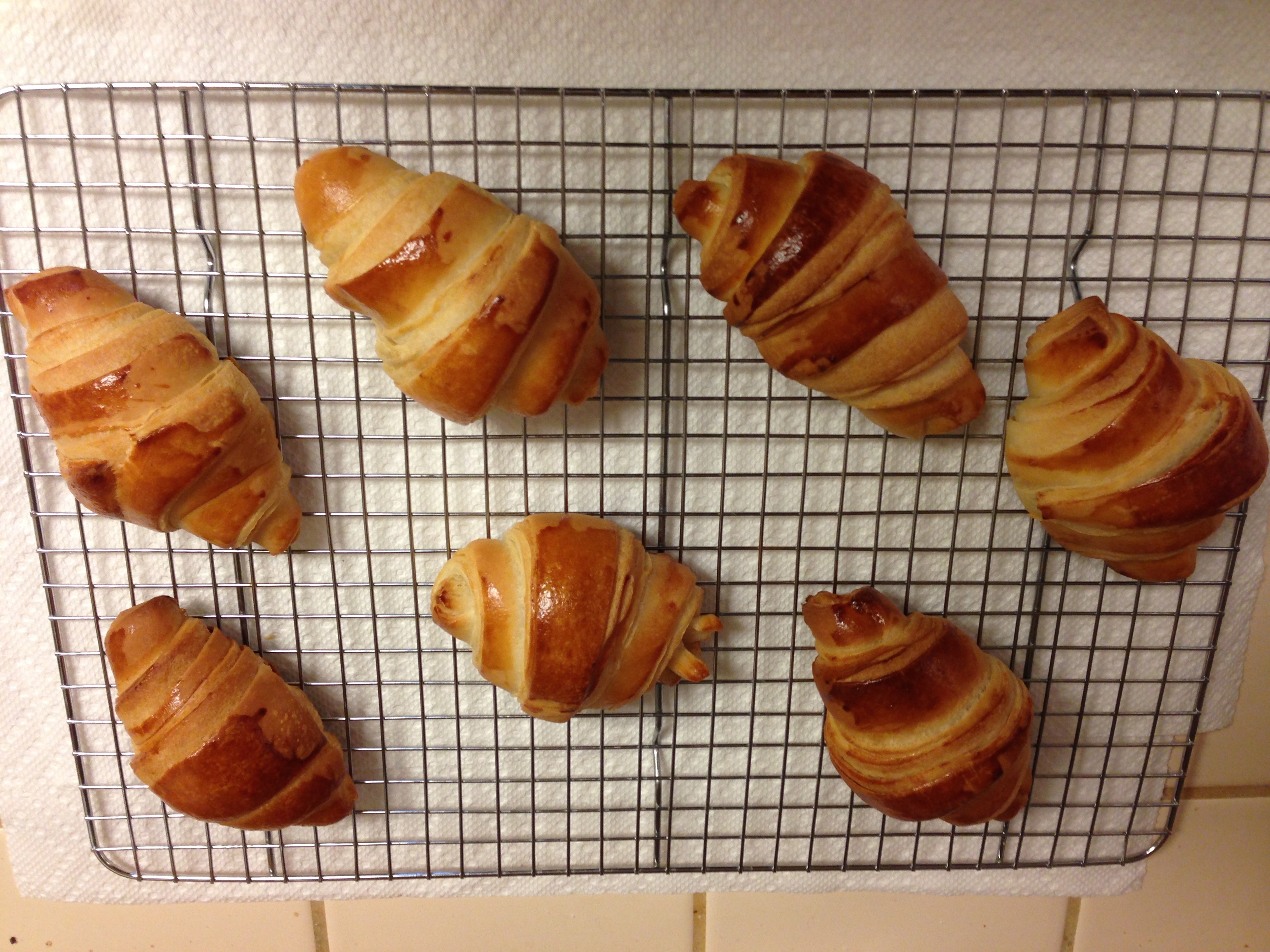INFO
Perfect breakfast!
Details
Ingredients Dough
- 500 g of All-Purpose Flour (2 cups)
- 60 g of sugar (1/3 cup)
- 10 Powdered milk (1 tbsp)
- 12 g Salt (2 tsp)
- 100 g Unsalted Butter softened (7 Tbsp)
- 25 g Fresh Yeast (1.25 cakes)
- 230 g Cold Water (a tad less of a cup)
- 250 g Unsalted Butter Chilled
Ingredients Egg Wash
- 1 Egg Yolk
- 1 Egg
Method
- Phase 1
- Place flour, sugar, powered milk, 100 g softened buttered into the mixer bowl
- Add the yeast, crumbled
- Start mixing from low speed (to prevent dusting the kitchen) to medium speed, adding the cold water slowly.
- Keep mixing for about 6 minutes till the dough pulls away from the side and is soft, elastic and smooth.
- Flatten the down into a rectangle of about 25 cm
- Wrap in plastic wrap and refrigerate for 2 hours
- Phase 2
- Chill the Butter
- Lightly dust the work area, get the dough out
- Roll the dough into a 6 mm thick rectangle, about 25 cm wide
- Original recipe calls for rolling the chill butter, I never succeeded in doing so…so I cut the butter in long regular slices a few mm thick
- Once this is done, place the butter over the bottom half of the dough rectangle, then fold the remaining part of the dough over.
- Rotate the dough a quarter turn so that the open side of the dough is facing you
- Roll the dough into another rectangle (6mm thick, 25 cm wide or so)
- Now fold the bottom third of the dough toward the middle, then fold down the top third over it.
- Now fold the entire dough in half, press it down a bit, smooth the edges.
- Cover it with plastic wrap and chill for an hour
- Phase 3
- On a lightly floured surface, arrange the dough with an open side facing you
- One more time, roll the dough into a 6 mm thick rectangle, about 25 cm wide
- Fold the dough in 3 parts as before
- Cover it with plastic wrap and chill for an hour
- Phase 4
- Take the dough out, arrange it on the work surface (lightly floured) with an edge facing you, this time try to make a square of 3-4 mm about 50 cm wide.
- Cut the dough in half
- Reserve one half into the fridge (drape it over the rolling pin to transfer the half you do not use to a baking sheet that you can place in the fridge).
- Using a pastry knife, start cutting isosceles triangle with a base of about 5cm.
- Now roll each triangle into a croissant, starting from the base (duh) and place your fingers on the edges.
- Make sure to place the tip under the croissant
- Phase 5 a (storage)
- At this point, you can freeze the croissants for later use.
- To do so, I place the baking sheet into the freezer, then a few hours later transfer the croissant into a bag (which I sous-vide)
- Phase 5 b (rise & cook)
- As I usually do the croissant in the evening, I keep a batch in the fridge for the morning. Cover the croissant with plastic wrap while in the fridge. 2 hours before breakfast, take out the croissant, and let it rise (cover with a kitchen towel)
- Pre-heat the over to ~375 F (190 C)
- Prep your egg wash, using the yolk and the whole egg. Mix well then brush the croissants and place the croissant in the over
- Let it cook for about 15-25 mn depending on your oven until golden brown
- Take the croissant out , set on a rack and let cool.
- Phase 5 c (rise & cook - frozen batch)
- As to the frozen croissant, simply take them out of the fridge on the evening.
- In the morning you, pre-heat the oven to 375F/190C
- Prep the egg wash (see above) and brush the croissants
- Insert the croissants in the oven for 15-25 mn depending on your oven until golden brown
- Take the croissant out , set on a rack and let cool.
Quick View
| Traditional | |
|---|---|
| Serve | |
| Preparation Time | 20 mns + 6 h unattended (in phases) |
| Cooking Time | 15-25 mn |
| Temperature | |
| Authors | Pascal Crausaz / Christopher Felder |
| Special |

